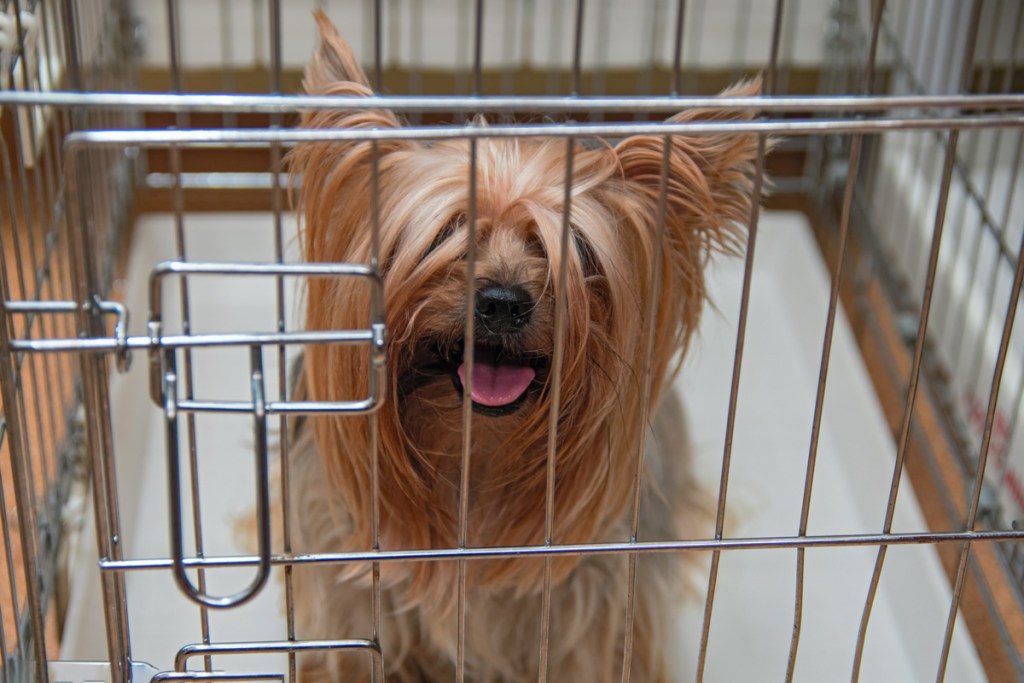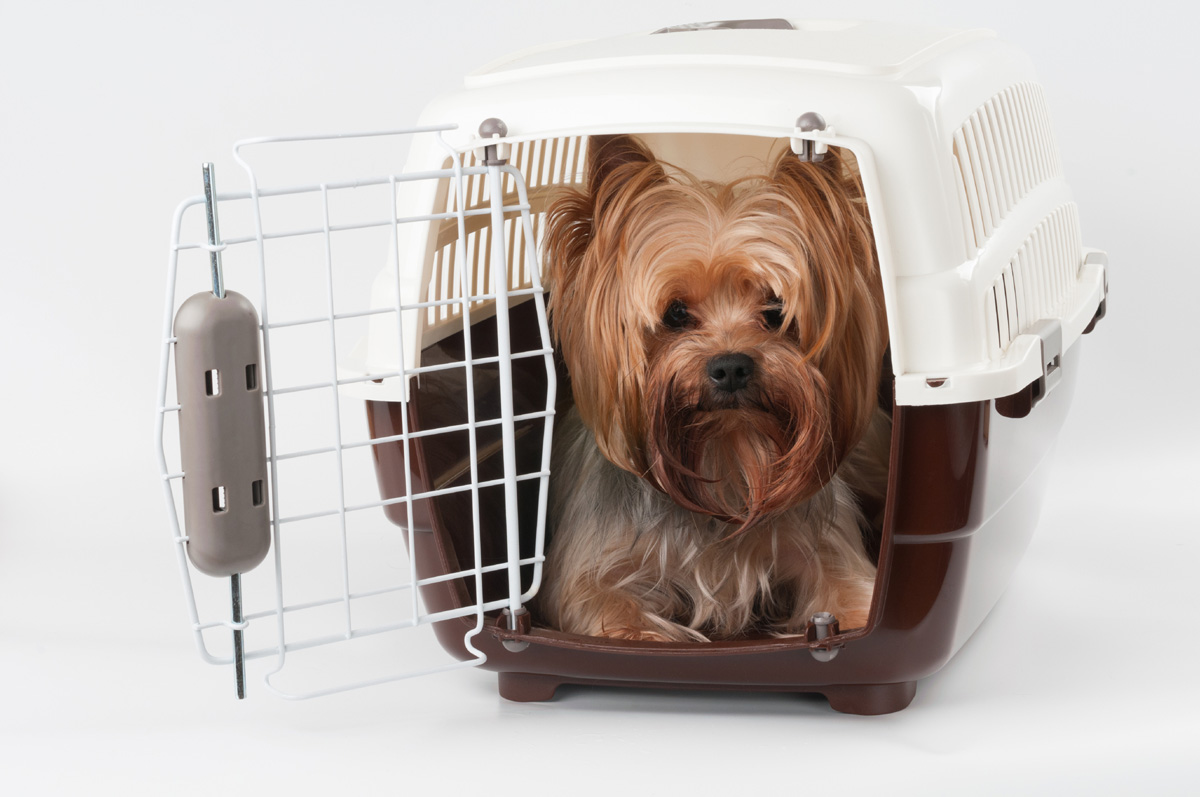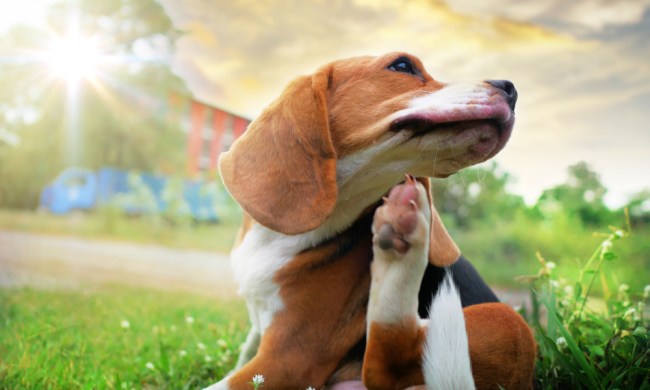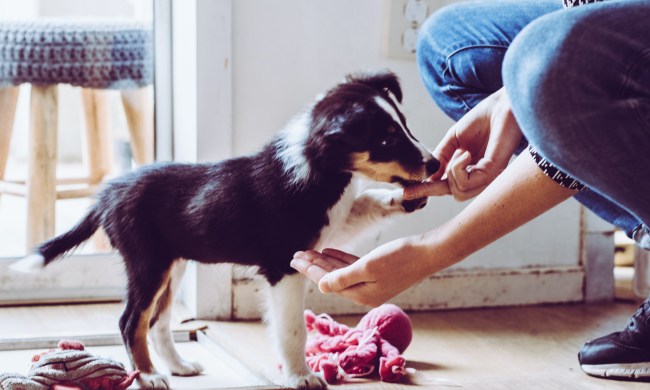So you’ve added a Yorkshire Terrier to your family and now you’re wondering what’s the best way to keep her safe and happy. You certainly have your hands full — these feisty terriers are described by the American Kennel Club (AKC) as “tenacious, brave, and sometimes bossy.” Training your newcomer to be comfortable in a crate is a great way to help her safely adjust to life with you.
According to training experts at the American Society for the Prevention of Cruelty to Animals (ASPCA), crate training a Yorkie offers many benefits.
Easier housebreaking
Crate training is an invaluable housebreaking tool because most dogs won’t soil where they sleep. Your Yorkie should have just enough room to comfortably stand up, turn around, and lay down in her crate. You can allow her more space once she’s housebroken. Puppies should only be confined in the crate for short periods as they have limited bladder and bowel control. A good guideline is one hour for each month of age as recommended by experts at the ASPCA.
Stopping unwanted behavior
All puppies go through a destructive chewing stage, and a crate serves as a short-term way to keep your puppy safe when you can’t supervise her.
Safer traveling
A portable dog crate is a great way to keep your Yorkie safe while on the road. It also helps your dog to relax in a hotel room or when visiting family and friends.

Follow these 6 easy steps when crate training your Yorkie
Training experts say that crates should never be used as a form of punishment or to confine dogs for long periods. Whether using a small plastic carrier or a larger wire crate, when introduced slowly using positive motivation training, your Yorkie will come to see it as a happy little home.
Step 1
Place the crate in a central location in the house so your Yorkie won’t feel isolated when confined. Place a warm blanket and one or two of your dog’s favorite toys in the crate.
Step 2
Slowly introduce your Yorkie to the crate by dropping her favorite treats inside the door and encouraging her to go in and get them. Keep these sessions fun and offer lots of praise when she goes in and out of the crate.
Step 3
Start using a cue word to let your puppy know when you want her to go into the crate, such as “in your crate” or “go to bed.” Be consistent with your cue so she doesn’t get confused.
Step 4
Start feeding your puppy meals in the crate so that she makes a positive association with being in there. Once she’s comfortable in the crate you can start closing the door while she’s eating. Slowly increase the length of time she’s confined in the crate after she eats until she’s in there for about 10 minutes.
Step 5
Ask your Yorkie to go in the crate for short periods during the day. Start by sitting near the crate so she doesn’t associate crating with being left alone. Once she’s relaxed in the crate you can start leaving the room for a few minutes. The goal is to gradually lengthen the time you are out of her sight. Don’t rush this. If she starts whining, you’re probably going too fast. Be sure you wait until she stops whining before opening the door so she doesn’t associate that behavior with being let out of the crate.
Step 6
When your Yorkie can stay in the crate for about 30 minutes with you out of sight, you can start leaving the house for short periods. At this point, she can also sleep in the crate at night. Keep the crate in your bedroom so you’ll be alerted when she needs to go out.
Are Yorkies easy to crate train?
According to the AKC, Yorkies are affectionate dogs who are intelligent and eager to please, which makes crate training easy. Yorkies don’t respond well to harsh corrections, so the training needs to be positive with lots of rewards and praise. Judy Marksbury, a member of the board of directors of the Yorkshire Terrier Club of America, suggests Cheerios or shredded cheese as good training treats for these terriers.
Experts at Save a Yorkie Rescue (a nonprofit that’s rehomed more than 2,500 Yorkies) say that it’s important to be patient when it comes to potty training. According to the rescue, it is unrealistic to expect a puppy that’s less than a year old to be housebroken. “That’s like expecting a 1-year-old child to be completely potty trained — It just isn’t going to happen.”

Is crate training good for a Yorkie?
According to Save a Yorkie Rescue, by providing your Yorkie with a crate, you’re giving her an indoor dog house — a den where she can relax and feel safe. A crate will also keep your Yorkie out of trouble when she can’t be supervised. Traveling in a crate could save your terrier’s life — one of the most common pet injuries is due to accidents inside cars, according to PetMD. Your Yorkie will be much safer curled up inside a properly-secured crate when traveling.
Finally, if your Yorkie is having problems adjusting to her crate, experts at the ASPCA advise seeking guidance from a veterinarian to rule out any health issues. Once your little girl does learn to love her crate you can relax knowing that she’s happy and safe whether home alone or taking a vacation with you.



